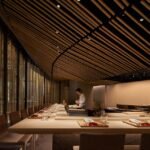[ad_1]
While Japan is a popular travel destination, not many international travellers make it north of Tokyo (with the exception of Hokkaido). The Tohoku region or the northern side of the island of Honshu encompasses the prefectures of Miyagi, Yamagata, Iwate, Akita, Aomori and Fukushima. It is a treasure trove of onsen hideaways, medieval castles, scenic mountains and lakes, impossibly picturesque towns and world heritage sites sans the tourist hordes.
During my latest trip to Japan, I wanted to do something different and instead of focusing on the usuals such as Tokyo, Osaka and Kyoto; I headed north to explore the side of Japan that not many get to see.
In this itinerary, I show how you can explore Tohoku conveniently in a few days, departing from Tokyo.
Getting There
The Tohoku region is vast and comprises a huge chunk of the island of Honshu. With a JR East Tohoku Pass, you can explore the region through unlimited rides on the JR East railway for a period of 5 days. This includes the Shinkansen and local trains. This also includes the JR lines in Tokyo so if you plan to do a bit of exploring in the capital before/after your trip, you can do so with this pass. If you intend to visit the Tohoku region for a couple of days, I recommend getting this pass as there are quite a bit of train rides needed and it will end up cheaper than buying train tickets ala carte.
Day 1 – Hirosaki
For the first day, I suggest heading directly to the far north, starting from the Aomori prefecture, and gradually making your way south from there.
The largest city and capital of the Aomori prefecture is the namesake city of Aomori, but I would suggest making your way instead to the more laidback town of Hirosaki, just 40-minute train ride from Aomori itself.

hirosaki castle
The town of Hirosaki is noted for its beautiful cherry blossoms as well as autumn foliage. The Hirosaki Castle is often considered as one of the most beautiful in Japan.
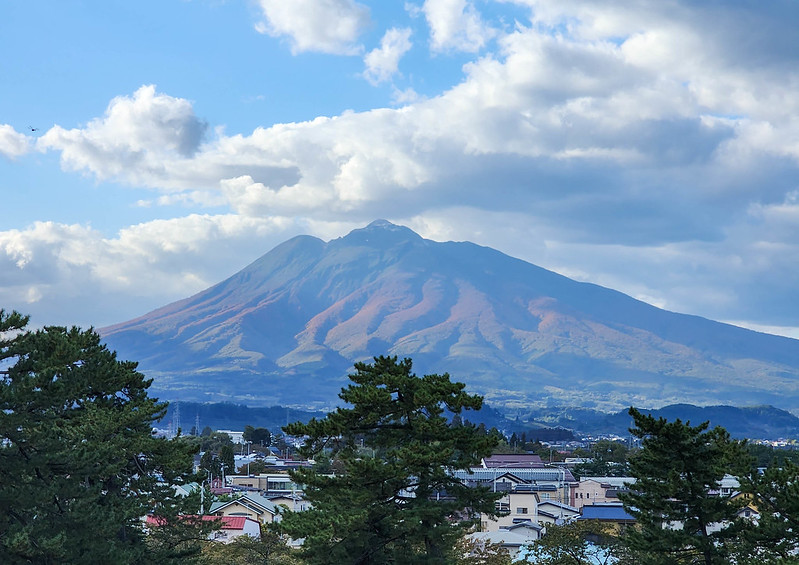
mount iwaki as seen from hirosaki castle
This castle is a must-visit attraction in Hirosaki. It was built in 1611 and is surrounded by a moat and beautiful cherry blossom trees. The castle is open to the public and offers a great view of the city as well as of Mount Iwaki from the top.

early autumn colors in hirosaki castle grounds
If you come between late October to early November, you can also catch some spectacular autumn foliage from the park surrounding the moat and castle. I visited just a tad early when the leaves were only starting to turn red.
If time permits, head to Hirosaki Apple Park where you can have the chance to pick some of Aomori’s famed apples. Japan’s well-known Fuji apples actually come from Aomori prefecture rather than from the Mt Fuji area and you can pluck these famed fruits first-hand for a nominal fee.
Where to stay: I stayed in Dormy Inn Hirosaki which is within walking distance to the castle. The hotel also features a hot spring as well as free ramen in the evenings.
Where to eat: Unashin (うな新) is an old unagi restaurant located just two blocks away from Dormy Inn. The eels are freshly grilled on charcoal and are mildly sweet and incredibly fluffy.

noodles from ramen man
If you are in Hirosaki during the colder months and prefer something soupy, Ramen Man serves delicious noodles. I would suggest going for the spicy miso for an added kick.
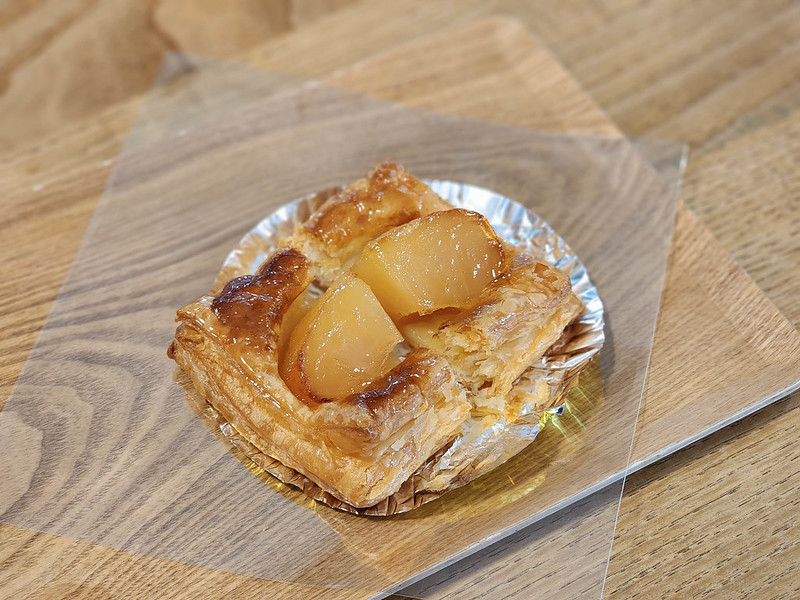
freshly baked apple pastry in aomori prefecture
Another thing to try while you are in Aomori prefecture are the multitude of apple products. This can take the form of fresh apple juice, apple desserts and even apple cookies. I personally love their freshly-baked apple pies which you can easily get from the souvenir store in the train station.
Tip: If you travel multiple times a year, you may consider getting an annual travel insurance plan. Chubb Travel Insurance’s annual plan covers commonly visited Asia-Pacific countries such as Japan, Korea, Malaysia, Australia and Thailand, as well as other worldwide destinations. Find out more here
Day 2: Geibikei Gorge
For the second day, leave Hirosaki and take the shinkansen from Shin-Aomori to Ichinoseki, a good base for exploring the nearby sights of Geibikei Gorge and the UNESCO World Heritage-listed town of Hiraizumi.
Logistics-wise, it makes sense to have Ichinoseki as your base but in my case, I decided to spend the night in nearby Sendai where there are better lodging options.
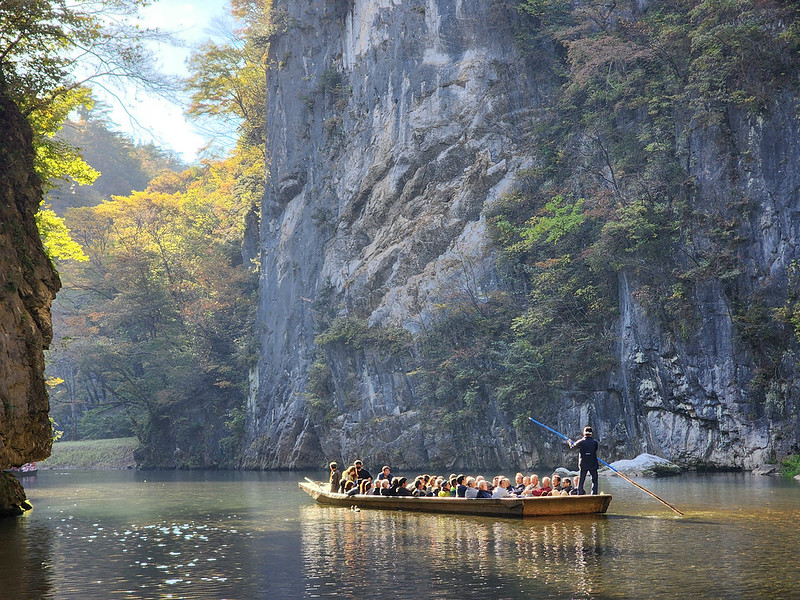
geibikei gorge
From Ichinoseki, you can take the bus for a 40-minute ride to the incredibly scenic Geibikei Gorge. The gorge is known for its towering cliffs, translucent waters and scenic boat tours that allow visitors to explore the area in a unique way.
The tour itself lasts about 90 minutes and provides breathtaking views of the surrounding cliffs and waterfalls. Visitors can also hike along the riverbank and explore the various trails that lead to hidden waterfalls and scenic viewpoints.
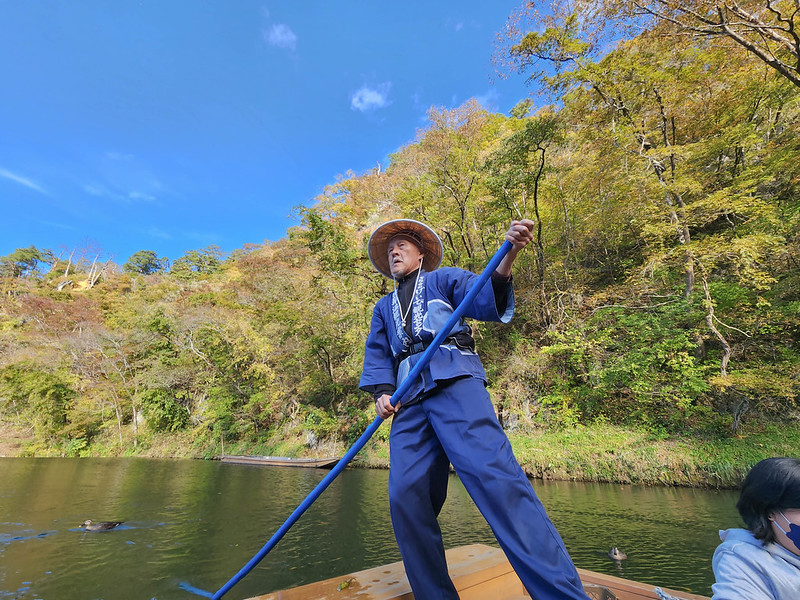
traditional boat ride in geibikei gorge
The boat will be rowed by a man wearing a traditional Japanese costume. Midway in the tour, he’ll also serenade passengers with a traditional song which adds to the special atmosphere of the boat ride.
After finishing the ride, take the bus and make your way back to Ichinoseki where you can spend the night, or you can do what I did and take the 30-minute shinkansen ride down to livelier Sendai.

daiwa roynet sendai nishiguchi
Where to stay: The Daiwa Roynet Sendai Nishiguchi is a new hotel located just a block away from Sendai Station. Rooms are spacious and well-appointed with plush beddings. There’s a 7-11 and Starbucks conveniently located downstairs.
Day 3: Hiraizumi
If you had decided to stay in Sendai the previous night, you will need to backtrack a bit and take the shinkansen again to Ichinoseki. After reaching, connect to a local JR train to the small town of Hiraizumi.
Hiraizumi was once the political and cultural center of the Tohoku region during the 12th century. The town is home to several historical sites that have been designated as UNESCO World Heritage Sites.
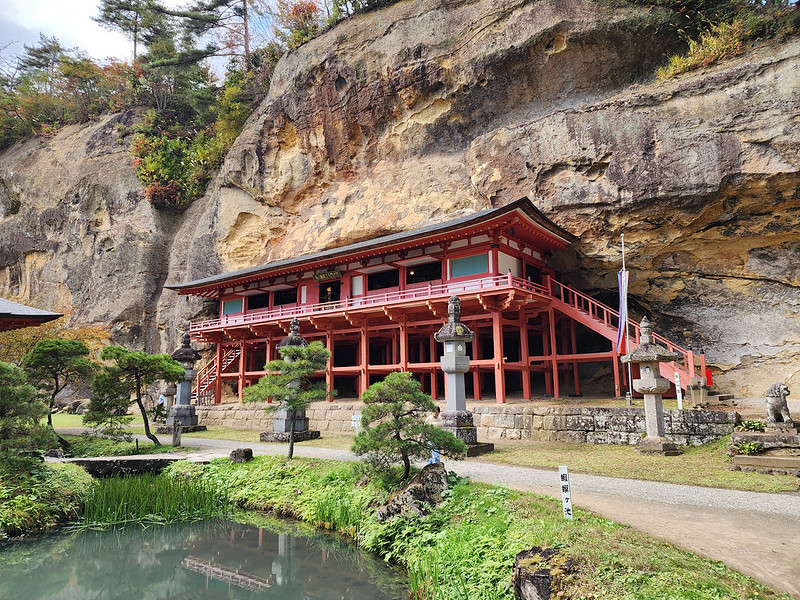
Takkoku-no-Iwaya Bishamondo
One of the most picturesque places to visit in Hiraizumi is Takkoku-no-Iwaya Bishamondo. It is a temple carved directly into the rock face of a cliff, giving it a unique setting. The temple is dedicated to Bishamonten, one of the Seven Lucky Gods of Japan, and is a popular pilgrimage site for those seeking blessings for wealth and prosperity.

motsu-ji temple
Another significant site is the Motsu-ji Temple, which was built in the 9th century. The temple was destroyed during a civil war in the 12th century but was later restored. The temple is known for its beautiful garden, which is considered one of the best examples of Japanese garden design.
As the temples are quite spread out, the best way to explore Hiraizumi is by bike. You can rent one just outside the station and there are options to rent either a traditional bike or an e-bike. Allow for half a day to fully explore the sights of Hiraizumi.
After finishing, go back to Ichinoseki and take the shinkansen to Koriyama, one of the main hubs of Fukushima prefecture and spend the night there or if time permits, you can head further inland to the more charming town of Aizu-Wakamatsu which requires an extra 1 to 1.5 hour of travelling by local train.
Where to stay: In Koriyama, the Daiwa Roynet Koriyama Station is conveniently located just next to the train station. In Aizu-Wakamatsu, the Higashiyama Onsen Mukaitaki is an atmospheric ryokan in a beautiful historic building.
Day 4: Aizu-Wakamatsu to Ouchijuku
Start the day by heading to the village of Ouichijuku, one of the most atmospheric traditional towns in Japan.
If you are coming from Koriyama, you will need to head to Aizu-Wakamatsu first which takes approximately 1.5 hours. If you spent the previous evening in Aizu-Wakamatsu, you can take one of the local trains to Yunokami Onsen and then take a short bus ride to the village.

ouichijuku
Ouchijuku is a beautifully preserved Edo-era post town. It was once a busy stop along the Aizu-Nishi Kaido trade route that connected Aizu with Nikko during the Edo Period. Today, Ouchijuku is a popular tourist destination that offers visitors a glimpse into Japan’s rich cultural heritage.
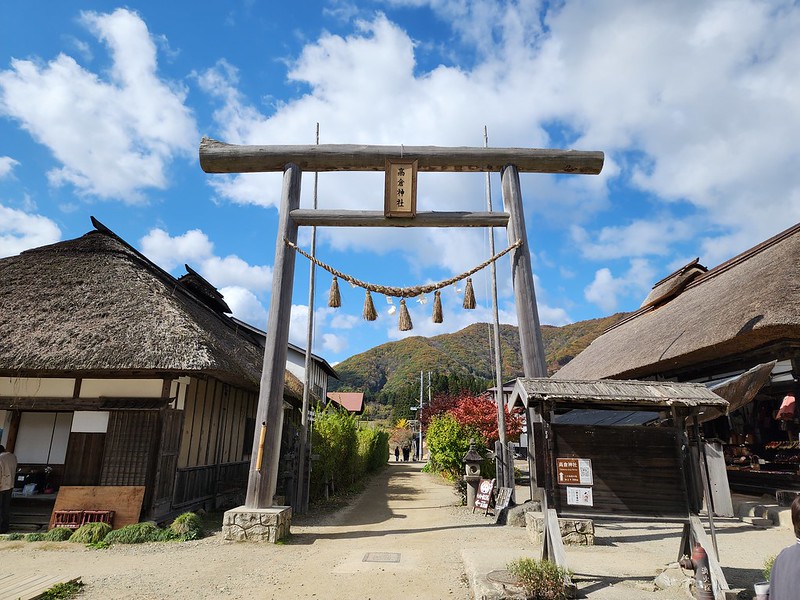
ouichijuku
Ouchijuku is known for its thatched-roof buildings and wooden storefronts that make for a wonderful view when surveyed from the viewing deck at the end of the village. Visitors can also see the town’s historic stone-paved streets, which date back to the Edo Period. The town’s historic post office, which is still in operation, is another popular attraction.

leek soba from ouichijuku
The village is also famous for its local delicacies, including soba noodles and grilled skewers of char-grilled, salted rice cakes known as “dango.” The town’s soba noodles are made from locally grown buckwheat and are known for their unique texture and flavour. They are meant to be eaten using a stick of leek as cutlery instead of chopsticks.
Ouichijuku can be explored in about 2 hours – 3 if you include lunch. After making your way back, you can take the shinkansen back to Tokyo for the night.
Travel Insurance
Medical expenses in Japan can be high so it’s best to get covered with travel insurance when visiting. Chubb offers travel insurance coverage, with overseas medical expenses benefit as well as unlimited coverage for emergency and repatriation, at a competitive price. The Chubb plans also include coverage for trip cancellation or curtailment, including due to COVID-19, loss of personal items or baggage, as well as coverage for travel delays of as little as 4 hours. Whereas most other insurance plans only give cash compensation for delays of 6 hours or more. Additionally, the Chubb travel insurance cover is customisable with optional add-on benefits (e.g. cancellation of overseas wedding photoshoots, skiing, adventurous sports etc.) to suit your travel needs. You can find out more here.
This post is written in collaboration with Chubb Insurance Singapore Limited.
[ad_2]









